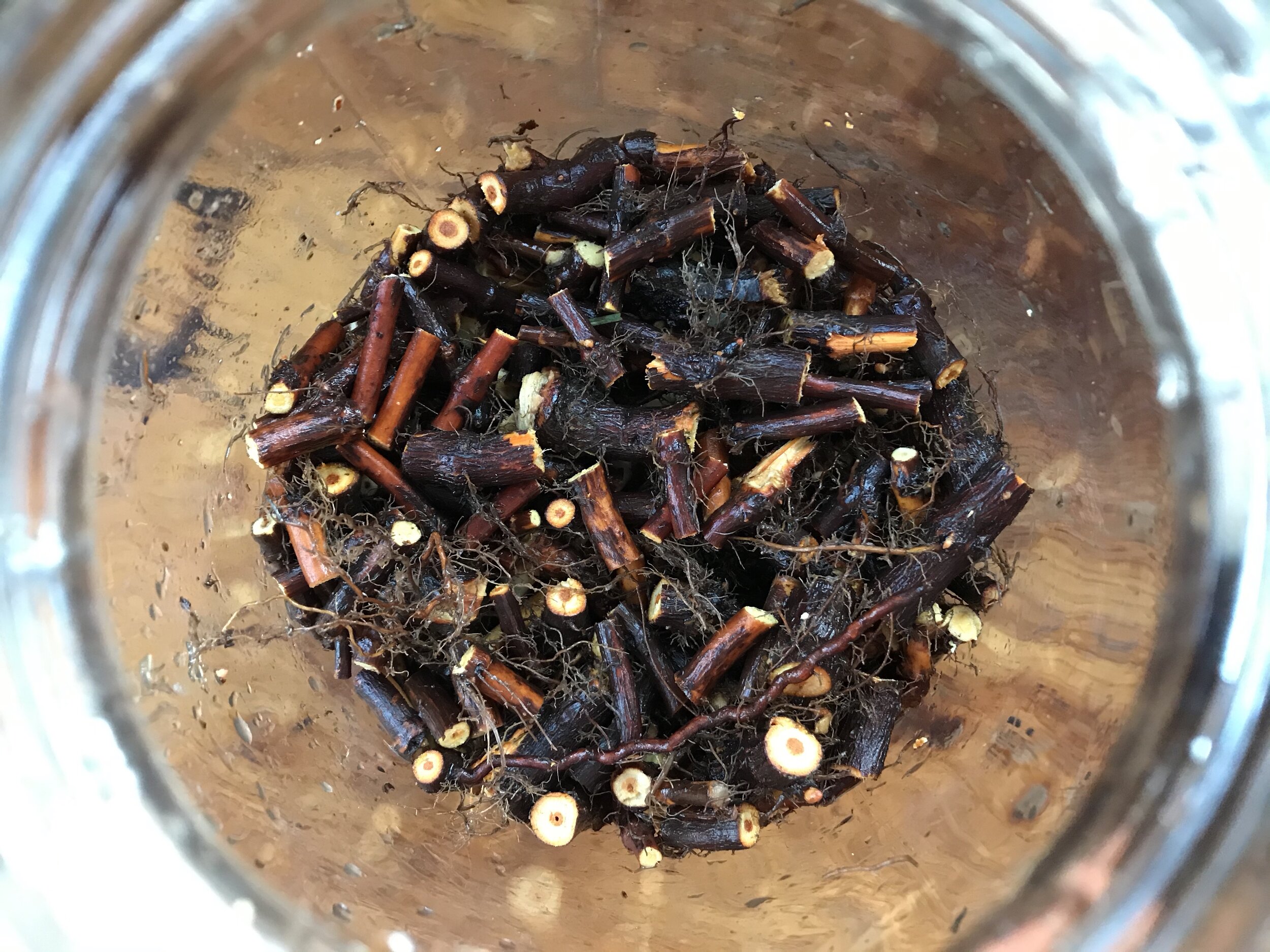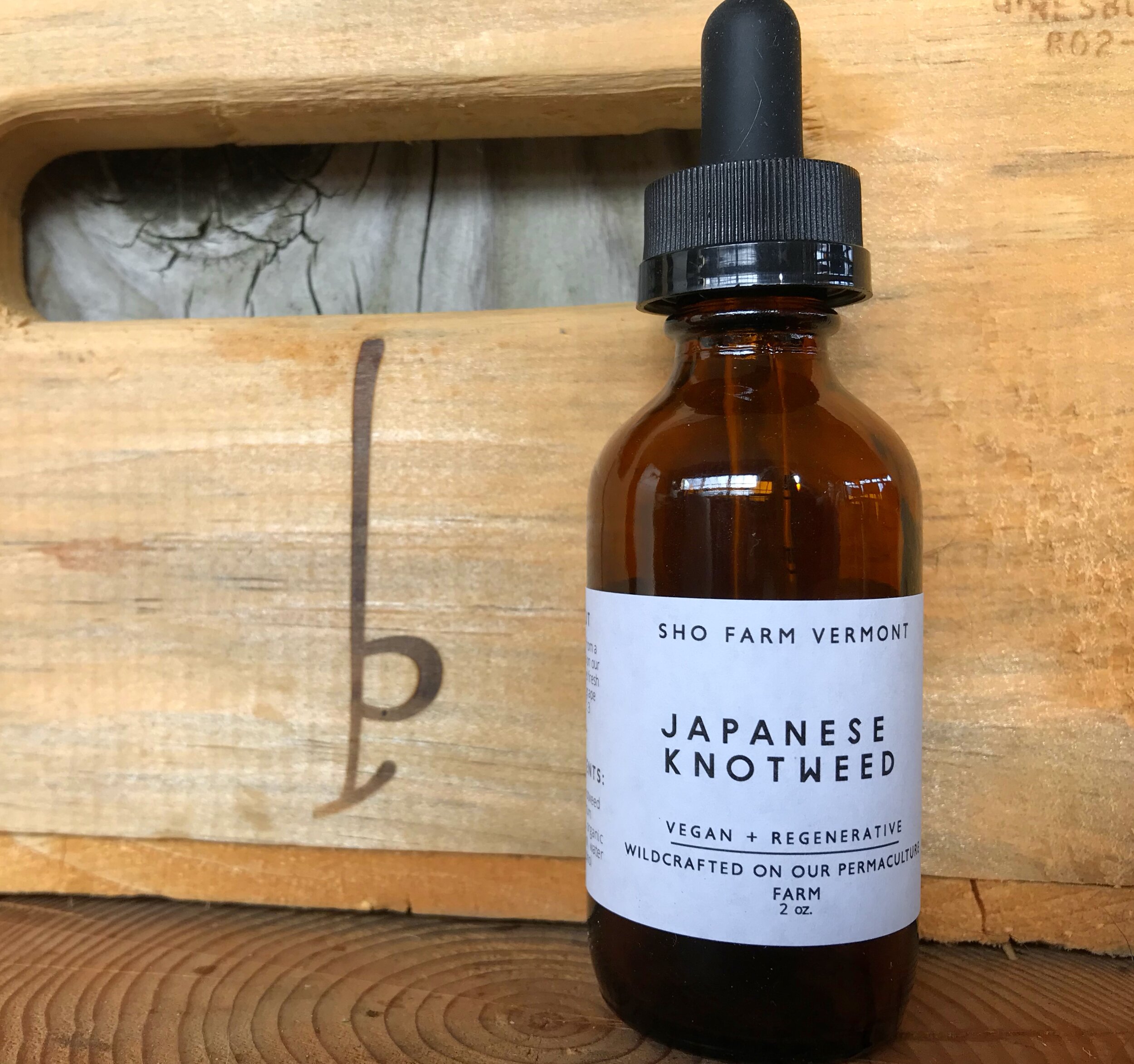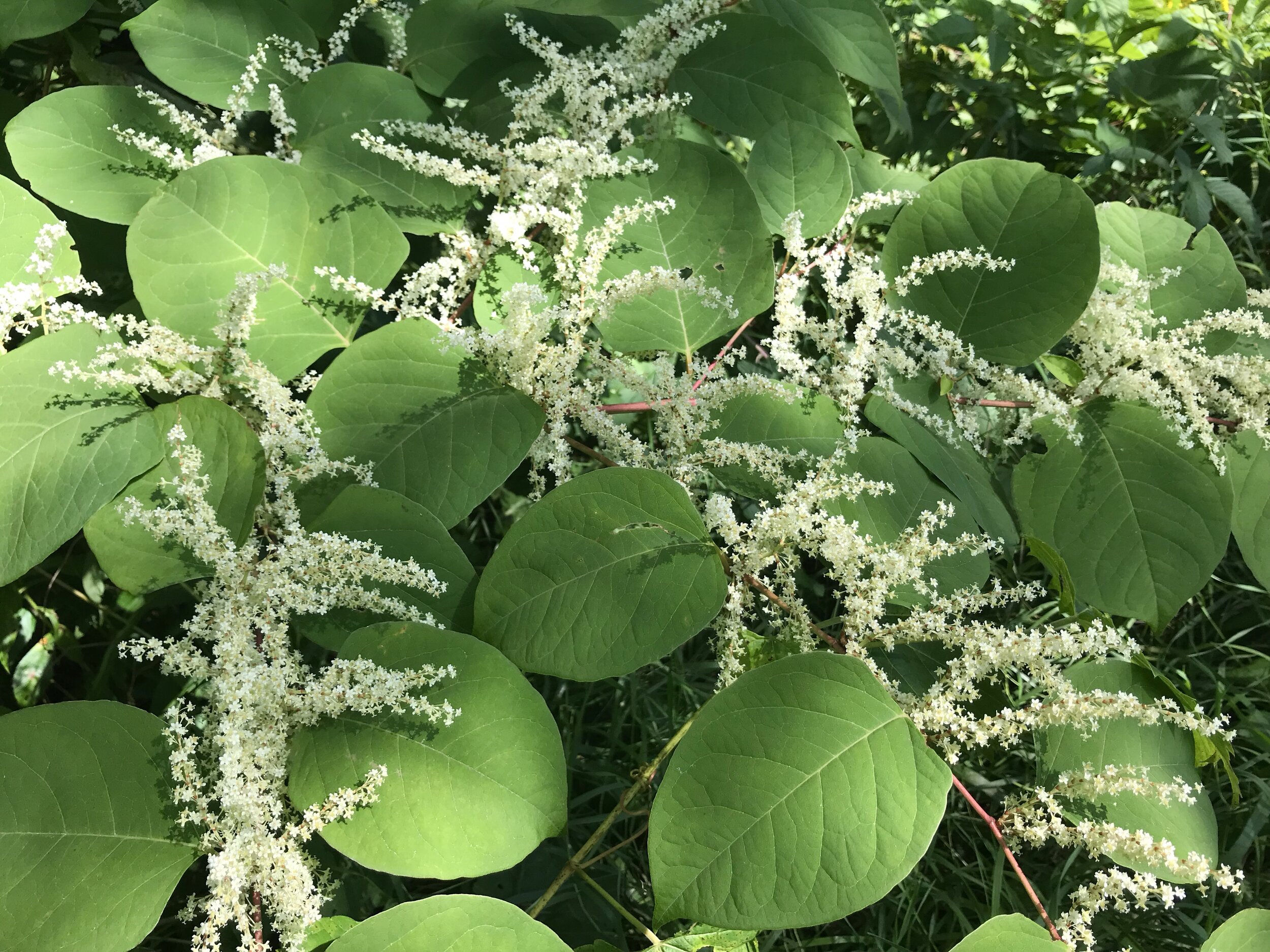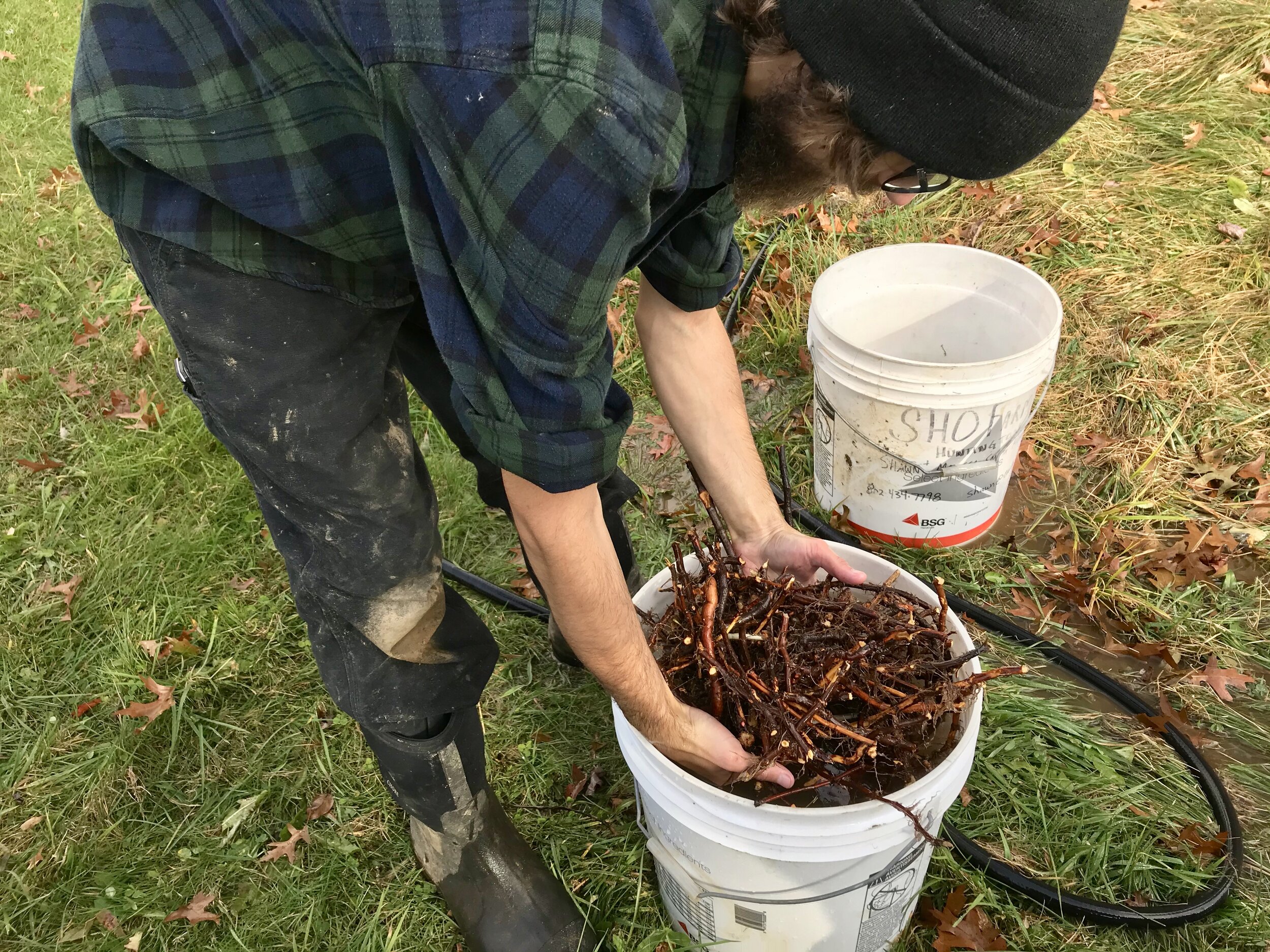Fresh Japanese Knotweed Tincture: Covid, Lyme, Brain, Heart




Fresh Japanese Knotweed Tincture: Covid, Lyme, Brain, Heart
*Eligible for Helping Hand Program
This fresh japanese knotweed (polygonum cuspidatum) tincture, a central component in the treatment of Lyme disease and corona virus, was made from wild roots harvested in the fall of 2019 at SHO, untouched by road salt, fertilizer, herbicides, or vehicle exhaust. The fresh roots were ground and placed into a tincture of 190 proof organic grape alcohol and water. Japanese knotweed is powerful source of resveratrol, and its actions potentiate all other medications by allowing them to perfuse the muscles, connective tissue, and synovial fluid where the lyme spyrochetes can live. But its benefits extend far beyond its resveratrol content in the treatment of lyme. It also helps prevent viral attachment.
This is what Stephen Buhner, author of Healing Lyme, writes about Japanese Knotweed:
“Polygonum cuspidatum’s constituents cross the blood-brain barrier where they exert actions on the central nervous system: anti-microbial, anti-inflammatory, as protectants against oxidative and microbial damage, and as calming agents. The herb specifically protects the brain from inflammatory damage, microbial endotoxins, and bacterial infections.
“Knotweed enhances blood flow especially to the eyes, heart, skin, and joints. This makes it especially useful in Lyme as it facilitates blood flow to the areas that are difficult to reach to kill the spirochetes. It is a drug and herb synergist, facilitating the movement of other herbs and drugs into these hard-to-reach places when taken with them.
“Thus, the herb has a number of specific actions in the treatment of Lyme disease: (1) stimulating microcirculation, especially to the eye, knees heart, brain and skin, which helps carry active constituents to those locations to affect spirochete presence; (2) reducing inflammation in tissues, thus lessening both skin and arthritic impacts from the spirochetes; (3) protecting and correcting heart function and reducing inflammation in heart tissue, especially helping with symptoms associated with Lyme carditis: lightheadedness, shortness of breath palpitations, and chest pain; (4) reducing autoimmune reactions to Lyme; (5) promoting wide-spectrum antibiotic/antiviral action, including (mildly) against spirochetes; (6) enhancing healthy immune function; (7) acting as a synergist with other herbs or drugs in the treatment of Lyme; (8) protecting endothelial integrity from Lyme spriochetes and Lyme coinfections agents such as Bartonella; (9) acting as a fairly gentle anti-biofilm agent; and, (10) most importantly, reducing inflammation in the brain and central nervous system, helping restore function during neuroborreliosis.”
Healing Lyme, Second Edition by Stephen Harrod Buhner, Raven Press, Silver City, NM 2015
This is what he writes in his book Herbal Antivirals:
“Japanese knotweed is a world-class invasive originally native to Japan, north China, Taiwan, and Korea. It is another significant invasive that is specific for emerging infections. The root is the part of the plant used for medicine.
The herb has a wide range of actions; among other things, it is an antiviral, antimicrobial (widely), antifungal, immunomodulant, anti-inflammatory, angiogenesis modulator, central nervous system relaxant, central nervous system (brain and spinal cord) protectant and anti-inflammatory, antioxidant, inhibitor of platelet aggregation, inhibitor of eicosanoid synthesis, antithrombotic, tyrosine kinase inhibitor, antipyretic, cardioprotective, analgesic, hemostatic, and astringent.
A broadly systemic plant, Japanese knotweed modulates immune function, reducing and balancing cytokine cascades; is anti-inflammatory for arthritic, viral, and bacterial inflammations; protects the body against endotoxin damage; and is a potently strong angio- genesis modulator, highly protective of the endothelia of the body. It is specifically inhibitive of endothelial hyperplasia. It crosses the blood- brain barrier and is potently anti-inflammatory in the brain and CNS. It is highly specific for all CNS infections. “
Herbal Antivirals by Stephen H. Buhner, 2013, Storey Publishing, Page 90
FROM THE COVID PROTOCOL:
“The extensive cytokine release in the body causes an ongoing inflammation which can attack most organs eventually leading to organ damage and collapse. Interfering with the generation of the cytokines, which can be accomplished through a variety of herbal interventions, can substantially help the course of infection. For example, some researchers have found that simply reducing IL-6 during a Covid-19 infection will reduce inflammation, making the disease less acute, and enabling a better long term resolution. That is why the arthritis drug tocilizumab, which inhibits IL-6, has been found of use in treating acute Covid-19 infections”… “IL-6 and IL-8 are two of the more important cytokines to inhibit as part of Covid-19 treatment”…”IL-8 inhibitors include Cordyceps spp, Isatis spp, Polygonum cuspidatum [Japanese knotweed].”
This tincture launches our New Farmer Partner Program! A portion of the proceeds goes directly to new, regenerative-vegan grower Alex Lampel, who harvested the roots for this tincture. They will receive 30% of the proceeds for each bottle sold.
READ STEPHEN BUHNER’S FULL RESEARCH PAPER FOR AN HERBAL CORONA VIRUS PROTOCOL
